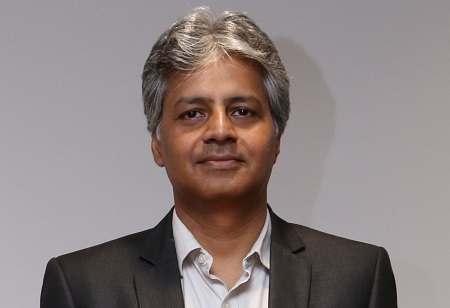
In an interaction with Industry Outlook, Atul Arya, Head of Energy System Division, Panasonic India, shares his views on the current evolution of energy storage, the challenges involved, and ways to address them. He also explains the role played by Panasonic India in this field.
The battery energy storage systems market in India is expected to grow at a CAGR of close to 10 percent till 2025. How do you see the current evolution of energy storage market in India? What are the major factors driving its growth?
CAGR might be more than 10 percent even beyond 2025. The market is at an inflection point that the industry has been forecasting. RTC, or Round-The-Clock power from renewable energy projects is the tipping point, and we will see large projects in this sector. The commercial and industrial (C&I) market, on the other hand, will see new developments and business models being implemented following various trials. Higher fossil fuel prices are fostering the commercial case for DG reduction/removal via battery storage. Further, activities in the electric mobility industry have intensified, with new product launches, FAME II as well as increasing governmental (Centre and State) subsidies to encourage category adoption.
How is Panasonic India positioned in this market?
We have been one of the early entrants in this market globally and India. We have made considerable investments in this sector and have established Panasonic as a significant player in the stationary storage space. We are robustly expanding the business, with further emphasis on electric mobility.
Lithium-ion segment is being predicted to grow at the fastest rate in India. What makes it advantageous over the other options? How has Panasonic India gained and retained a major share in this segment?
Electric mobility, especially two wheelers are driving this segment forward at a rapid pace. Lithium-ion batteries have a higher energy density, making them ideal for various applications. As mentioned before, we were one of the first to enter this market internationally and have over three decades of expertise in manufacturing Li-ion batteries. We have established ourselves via collaborations with industry leaders such as Tesla Motors and Toyota, globally. We began establishing quite early in India as well, and have committed a significant amount of resources in taking the lead.
Battery storage plays an integral role in grid modernization efforts. How is the transition to smart grids reliant on battery storage capability? How is Panasonic India enabling this transition?
Modern grids are becoming smarter by the day, adding newer elements and utilizing the new-age technologies such as IoT, Communications 4G/5G, energy storage,and so on to become more reliable, dependable, and efficient. With a large amount of renewable energy and distributed generation, there seems to be much more variations throughout the day. With the expansion of EV charging, there will be never-seen-before variations on the demand side as well. Because of its dual functionality as a generator and a load, energy storage will be necessary for grid reliability. Energy storage’s agility of response makes it most suitable amongst various other alternatives for balancing demand and supply. Its compact size and modular structure make it an appropriate choice for ensuring scalability.
The move towards renewable energy is also driving the adoption of battery storage solutions. What are the major challenges in its adoption? How is Panasonic India addressing them?
As utility companies continue to introduce renewable energy to the grid on a large scale, smart energy storage solutions will become an important component. It is understood that 15% - 20% of energy is wasted as renewable energy sources (wind and solar) can create grid instability due to fluctuations. This can be stabilized by utilizing energy storage solutions, which will provide high-quality electricity to the grid. Panasonic's Smart Energy Storage System, which consists of storage batteries and control units for charging and discharging, is tailored to a variety of applications (e.g. Residential Energy Storage, Community Energy Storage, Utility-scale ancillary services, etc.). The solution can regulate systems with over 1,000 storage batteries as part of a 1-MWh or bigger system by using a unique switching approach and managing energy storage.
We use cookies to ensure you get the best experience on our website. Read more...